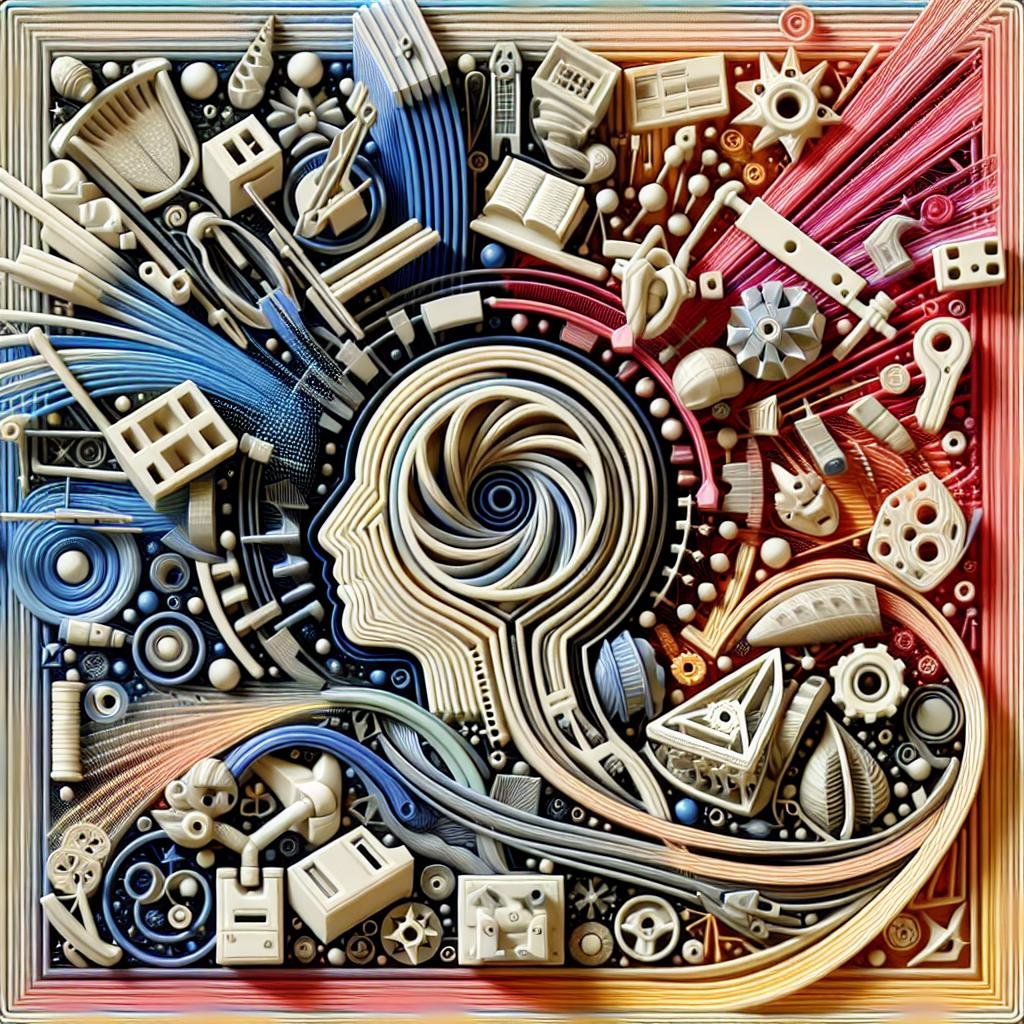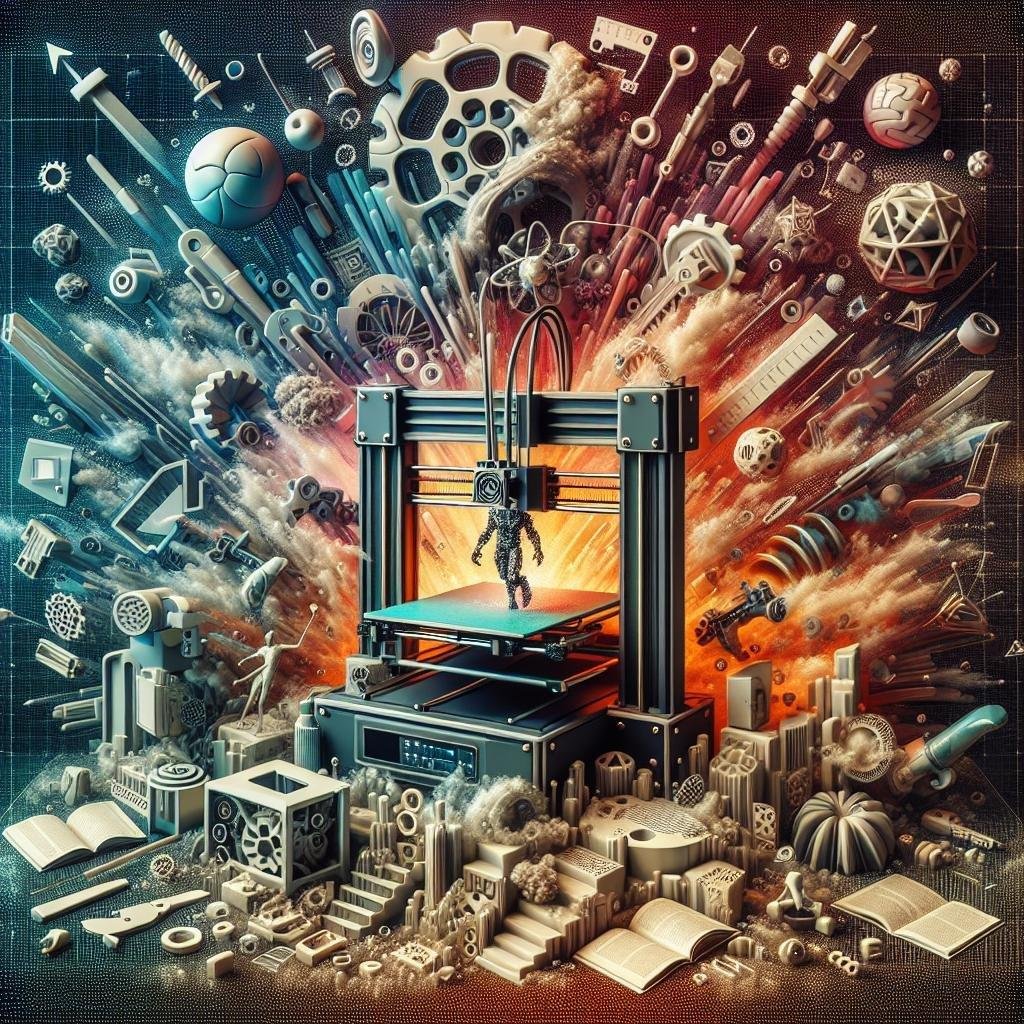In the ever-evolving realm of technology,3D printing stands as a beacon of creativity,allowing dreamers and innovators too bring their wildest ideas to life with a simple press of a button. Though, much like any creative pursuit, the path to perfection in 3D printing is paved with a host of potential pitfalls. Whether you’re a seasoned creator or an excited beginner eager to turn your digital masterpieces into physical reality, understanding these common 3D printing missteps is your first step toward success. join us on this enlightening journey as we delve into the quirks and quirks of 3D printing,offering you tips,tricks,and friendly advice to sidestep those printing predicaments and ensure that your prints emerge just as you envisioned — if not better!
Mastering the Basics: Identifying Common 3D Printing Errors
| Common Error | Speedy Fix |
|---|---|
| layer Shifting | Tighten belts and pulleys |
| Warping | Use a heated bed and proper material settings |
| Under-Extrusion | check nozzle and filament diameter |
Starting with the fundamentals ensures a smoother journey into the world of 3D printing. Layer shifting is a frequent gremlin that charitably nudges your prints off course. It usually arises from a lack of tension in the belts or pulleys. A snippet of advice: double-check the mechanical components to ensure everything’s snug. Another perennial trouble is warping, especially with ABS materials. Overcome this by using a heated bed and ensuring your printing environment is free from drafts. Calibration and setup take a bit of patience, but they substantially cut down on mishaps.
Perhaps you’ve encountered the exasperating issue of under-extrusion, where less material is deposited than needed. Before tearing your hair out, verify the nozzle size and filament diameter—they’re the usual culprits. Dry and clean filament ensures smoother runs and prevents clogging. The key to resolving these hiccups lies in meticulous inspection and adjustment. Add these to your repertoire:
- Regular maintenance of machines
- Close monitoring of first layers
- Using quality filament
With a keen eye on basics, you’ll find that the printer’s quirks become part of its charm.

Unlocking Perfection: Fine-tuning Filament Choices and Settings
choosing the right filament is crucial in achieving impeccable prints and avoiding common 3D printing mistakes. It’s not just about picking a color that suits your project; it’s about understanding the material’s specifications and how they match your project’s needs. Start by knowing the strengths of popular filaments: PLA is beginner-friendly with low warping, while ABS offers greater heat resistance suitable for functional parts. If versatility is key, TPU might be your best bet. Not only should you consider the type of filament, but also its brand quality, as consistency in diameter and color can significantly impact the output. Testing small prints with new brands to ensure reliability can save time and filament in the long run.
Once you’ve honed in on the perfect filament, fine-tuning the printer settings is your next step to unlock perfection. Dive into the realm of settings to optimize for the selected material. Here’s a brief rundown:
- Temperature: Find the sweet spot so your material adheres perfectly with each layer.
- Speed: Adjust printing speed based on complexity and filament type; slower speeds generally increase fidelity.
- Retraction: Set this correctly to minimize stringing and blobs on intricate designs.
| Filament Type | Optimal Temp (°C) | Suggested Speed (mm/s) |
|---|---|---|
| PLA | 190-220 | 40-60 |
| ABS | 230-250 | 30-50 |
| TPU | 210-230 | 20-40 |
Experimentation is key in dialing in your settings to suit both the filament choice and your printer’s unique quirks. See each printing session as an opportunity to refine your setup, ensuring top-notch results every time. A well-tuned machine transforms high-quality filament into even higher-quality prints, melding technology and creativity seamlessly.

Design with Confidence: overcoming Structural Flaws in Models
When it comes to creating robust and reliable 3D printed models, being aware of common pitfalls can transform your design process. One major issue many creators face is layer separation, which typically results from fluctuating temperatures or improper layer adhesion. Ensuring your printer’s temperature is calibrated correctly and choosing the right adhesive aids like tape or glue can go a long way. Additionally, high-speed extrusion might rush layer formation; therefore, balancing speed with precision is crucial. This balance can be further optimized by adjusting the fan settings for improved material bonding without compromising cooling needs.
Another sneaky problem is over-reliance on supports, which can lead to wasted material and increased print time. Spend some time perfecting the orientation of your model to minimize support usage—a small adjustment from vertical to horizontal might just do the trick! Embracing tools like slicing software can enhance these adjustments by simulating the print and identifying potential issues. Think of these tools as your collaborative partner in crime, ensuring smoother prints and allowing you to manage resources effectively.
| Issue | Solution |
|---|---|
| Layer Separation | Optimize temperature & use adhesive aids |
| Excessive Supports | Adjust model orientation & use slicing software |

Pro-Tips Galore: Ensuring Your First Layer Sticks Every Time
One of the most common issues in 3D printing is getting that crucial first layer to stick. It’s the foundation of any successful print, so let’s dive into some expert tips on making sure it adheres perfectly every time. first off, think about your print bed surface. Different filament materials require different surfaces—some work best on glass with a bit of adhesive, while others thrive on PEI sheets.Whether you’re using painter’s tape or a specialized print mat, ensure it’s clean and free of residue. Adjust your bed leveling settings to ensure the nozzle is at the ideal distance from the surface. A properly leveled bed reduces the likelihood of filament not sticking because it ensures even distribution.
- Test temperature: Ensure your bed temperature is set according to the filament manufacturer’s recommendations.
- Optimize Speed: Slowing down the first layer print speed can dramatically improve adhesion.
Don’t ignore the importance of first layer height.It’s critical to establish a good adhesion base. Using a lower first layer height setting squishes the filament more into the build plate, enhancing grip. It may be beneficial to utilize a brim or raft setting, which creates additional surface area for the first layer to hold onto. If you’re encountering persistent issues, consider adjusting the nozzle diameter and extrusion width. Though smaller adjustments can seem daunting, they often make a notable difference.
| First Layer Challenge | Solution |
|---|---|
| Poor Adhesion | Use a heated bed and keep it level |
| Warping Curves | Consider adding a brim or raft |
Q&A
Q&A: Navigating the World of 3D Printing Mishaps
Q: 3D printing seems so exciting, but I keep encountering weird issues.Is this common for beginners?
A: Absolutely, you’re not alone! Just as with any craft or technology, learning the ropes can involve a few bumps along the way. The good news is that each mistake is a stepping stone towards mastery. Let’s dive into some typical errors and how you can sidestep them!
Q: my prints frequently enough don’t stick to the build plate. What’s going wrong?
A: Ah, the classic case of ‘floater’ prints! This frequently enough happens when your first layer isn’t adhering properly. To remedy this, make sure your build plate is clean and level, and consider adjusting your nozzle height to get that perfect initial layer. You could also use a bit of adhesive like glue stick or painter’s tape to improve adhesion.
Q: Why do my 3D prints look stringy or have wisps all over them?
A: Stringing is usually caused by filament oozing out of the nozzle as the printer head moves. Combat this by tweaking your retraction settings – increase the retraction distance or speed to reduce unwanted dribbles. Don’t forget to ensure that your filament isn’t too moist, as this can exacerbate stringing issues.
Q: I aimed for a specific design, but the final print looks distorted.What could be causing this?
A: model deformation can be a real head-scratcher, but it frequently enough boils down to temperature issues. Make sure your print temperature matches the filament manufacturer’s recommendations. Check your cooling setup as well—too much heat or sudden cooling can lead to warping or shrinking.Q: How do I prevent those frustrating layer shifts in my prints?
A: Layer shifts are like tectonic moves in your printing world, caused by mechanical misalignments. check that your belts are tight and the pulleys snug. Don’t forget a once-over on the stepper motor drivers—they might need a gentle touch to ensure they’re not overheating or under-delivering power.
Q: I’ve encountered under-extrusion. My prints have gaps and missing layers. Any advice?
A: Under-extrusion can stem from several sources, but start by examining your filament path. Is it smoothly feeding into the printer, or are there snags? Next, check your nozzle for clogs, and ensure the extrusion multiplier is set correctly in your slicer software.
Q: My prints finish, but they’re brittle and break easily. What’s the fix?
A: Brittle prints often result from incorrect temperatures or using old filament that has absorbed moisture. Make sure your filament is fresh and dry before printing. Adjust your infill and wall thickness settings to add strength to your prints, and confirm that your print temperatures are on point for your chosen material.
Q: Any final tips for avoiding common 3D printing mistakes?
A: patience is key! Always start with a test run to fine-tune settings. Keep your printer well-maintained, and don’t hesitate to reach out to online communities—these seasoned enthusiasts are a goldmine of tips and support. With time and practice, you’ll become a 3D printing pro, ready to tackle new challenges with confidence.
Remember, each print brings you one layer closer to success. Happy printing!
the Conclusion
As we wrap up our deep dive into the world of 3D printing mishaps and mastery, remember that even the most seasoned creators once tangled with a stubborn filament or faced the wrath of a misaligned layer. each mistake, while sometimes exasperating, is a stepping stone on the path to 3D printing prowess. The beauty of this art lies in its iterative nature and the endless potential for learning and innovation. So, whether you’re dodging the pitfalls of bed adhesion or navigating the nuances of nozzle temperature, know that each challenge brings you one step closer to perfection.
Keep your curiosity alive and your printer calibrated. the world of 3D printing is vast, filled with both trials and triumphs. Embrace the journey with patience and persistence, and soon you’ll find yourself transforming digital dreams into tangible reality. Happy printing!

